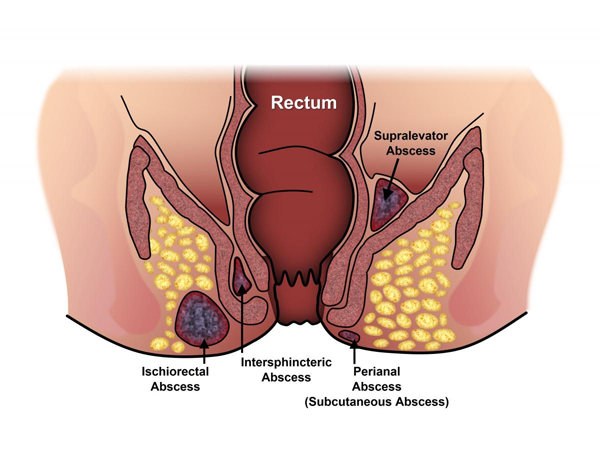What is an Anal Fistula ?
An anal fistula is a small tunnel that develops between the end of the bowel and the skin near the anus (where poo leaves the body).
They're usually the result of an infection near the anus causing a collection of pus (abscess) in the nearby tissue. When the pus drains away, it can leave a small channel behind.
Anal fistulascan cause unpleasant symptoms, such as discomfort and skin irritation, and won't usually get better on their own. Surgery is recommended in most cases.

What are the symptoms of an Anal Fistula ?
Symptoms of an anal fistula can include:
• skin irritation around the anus
• a constant, throbbing pain that may be worse when you sit down, move around, have a bowel movement or cough
• smelly discharge from near your anus
• passing pus or blood when you poo
• swelling and redness around your anus and a high temperature (fever), if you also have an abscess
• difficulty controlling bowel movements (bowel incontinence) in some cases
• The end of the fistula might be visible as a hole in the skin near your anus, although this may be difficult for you to see yourself.
What causes an Anal Fistula ?
Most anal fistulas develop after an anal abscess. They can occur if the abscess doesn't heal properly after the pus has drained away. It's estimated that between one in every two to four people with an anal abscess will develop a fistula.
Less common causes of anal fistulas include:
• Crohn's disease – a long-term condition in which the digestive system becomes inflamed
• diverticulitis – infection of the small pouches that can stick out of the side of the large intestine (colon)
• hidradenitis suppurativa – a long-term skin condition that causes abscesses and scarring
• infection with tuberculosis (TB) or HIV
• a complication of surgery near the anus
Who is at Risk for an Anal Fistula ?
The formation of an anal fistula typically occurs as a consequence of an anal abscess and between 25-50% of individuals with an anal abscess will develop an anal fistula. In rare occasions, anorectal cancers can occasionally present with an anal fistula.
Other risk factors include:
• Inflammatory bowel disease – Crohn’s disease or ulcerative colitis
• Systemic diseases – Tuberculosis, diabetes, HIV
• History of trauma to the anal region
• Previous radiation therapy to the anal region
How is an Anal Fistula Treated?
Anal fistulas usually require surgery as they rarely heal if left untreated.
The main options include:
1) a fistulotomy – a procedure that involves cutting open the whole length of the fistula so it heals into a flat scar
2) seton procedures – where a piece of surgical thread called a seton is placed in the fistula and left there for several weeks to help it heal before a further procedure is carried out to treat it
3) other techniques – including filling the fistula with special glue, blocking it with a special plug, or covering it with a flap of tissue
All these procedures have different benefits and risks. You can discuss this with your surgeon. Many people don't need to stay in hospital overnight after surgery, although some may need to stay in hospital for a few days.


